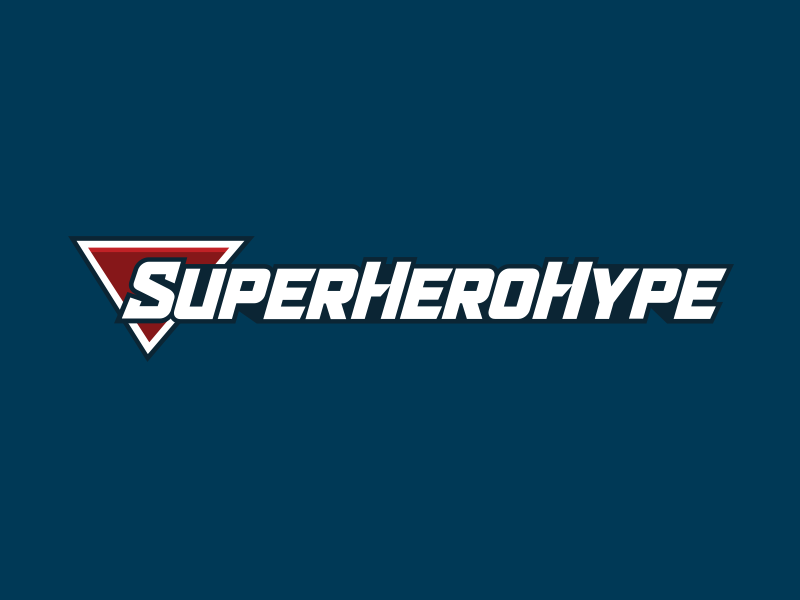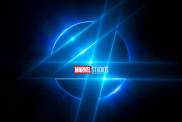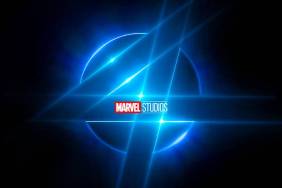
In addition to talking to the entire cast and director of Spider-Man 3, Superhero Hype! also got a chance to talk to producers Avi Arad, Laura Ziskin and Grant Curtis.
Superhero Hype!: To start with Avi, with Marvel starting its own productions, how is it continuing these coproductions and handling your own entity?
Avi Arad: Well, “Spider-Man” started with Sony and it continues with Sony and it’s been an amazing partnership. So really there’s no change. If Marvel makes their own movies or makes it in conjunction with the studio, the same attention, the studios still distribute the movies, it’s really no material change. It’s more of a financial change.
SHH!: With co-productions becoming common, and Marvel crossovers being so fun, are you looking at maybe “Spider-Man” and “Wolverine” in a film together with different studios?
Arad: I wouldn’t want to be in a room trying to get Sony and Fox to share characters. It would be an amazing moment to be a fly on a wall but I wouldn’t want to be handling this one.
SHH!: The novelization is already on sale in bookstores. That’s been common but in today’s age, is it a concern that someone could post it on the internet?
Arad: Well, I happen to think that it is a concern. It’s been this long tradition that we all here try to break. By the way, it’s on the…
Laura Ziskin: It’s on the best seller list, but yeah.
Arad: But you know what, it’s a shame because well, you saw the movie now, so there are twists and turns and we all worked very hard to create some mystery so by the time you get to the moviehouse, there’s something new, something fresh. The licensing business, the way it is, have these axioms that you have to release things six, eight weeks before. If it was up to me and just speaking for myself here, not for the studio or the company or Marvel, I would hold it back. I don’t think it’s a big enough business to warrant giving away the freshness of the movie.
SHH!: Talk about how Sam has developed the character over the three movies, and if this is his last one, going on without him?
Ziskin: Well, we’re not working at the moment on “Spider-Man 4” just like when we finished “Spider-Man 1,” at this stage we were not working on “Spider-Man 2.” And when we finished “Spider-Man 2,” at this stage we weren’t working on “Spider-Man 3,” so this has been the process. I think we all believe the franchise will continue but let me go back to your first question. It’s such a luxury, and we didn’t know this going in obviously that we would have this opportunity, but to follow characters over a long period of time. So I think it’s been fantastic for the actors, the core actors to develop those characters and go different places with them. It’s certainly been a treat for us as filmmakers to watch in particular Peter Parker grow up. All of the movies are in some way or another identity stories. Who am I? I’m Spider-Man. Who am I? I’m this nerdy kid. Fate intervenes, this thing happens, how do I deal with it? The second movie is okay, now this thing happened to me but it’s keeping me from having the things I want. What do I do? Always coming back to he has to accept his fate and learn to live with it. This third movie being at the end of the second movie, he kind of got everything he wanted and that seemed like a really fun place to start and different from where we’ve been before. Avi says Sam loves to beat up Peter Parker, or Tobey, I’m not sure which.
Arad: Both.
Ziskin: To put him in stressful circumstances, so it felt like it would be fun to start him, to give this nerdy kid who was always longing, reaching for something, to put him in a position where he kind of thinks, “Oh, I kind of have what I want. Gee, this feels kind of good.” And he becomes, as people often do in those circumstances, careless. And it opens him up obviously to his dark side. So it’s been really a treat to explore over the course of three movies, the growth of the character.
SHH!: If Sony moves forward with “Spider-Man 4” and Sam’s busy with “The Hobbit” or something else, are you prepared to approach another director?
Ziskin: What did he say? You guys had him before we did.
SHH!: He doesn’t know what he’s doing next.
Ziskin: I think that’s accurate.
SHH!: If it’s without him, would you reinvent the next trilogy with new actors, or go on with these actors and a new director?
Arad: You have to look at it as Spider-Man is over 40 years old, in so many media from animation to comic books to graphic novels, maybe Broadway, video games, probably the most successful video games of all time. So the character is bigger than all of us. I think we’d rather continue of course with Sam and the whole team. We’ve been together for a long time. This is like a mentally exhausting period when you finish a movie so none of us are going to give you the kind of answer that will make sense past May 6. I think that will be time to evaluate and look at it. It’s so speculative at this point. The fact is that the character will endure. Spider-Man survived, believe me, bankruptcies, bad economies, you name it. And it’s around and alive and bigger than ever.
SHH!: Talk about the week of shooting in Cleveland, how many people worked on it and why Cleveland?
Ziskin: How many people? How big a crew?
Grant Curtis: 150 or 200. We had probably 100-150 crew members there. It was a fairly sizeable crew. We shot a real extensive car chase sequence there. One of the things that appealed to us about Cleveland as not only the look and it did have some matching aspects obviously towards Manhattan until you go up too high with the camera. Especially we had a 10 block run of road on Euclid avenue that they repaved for us as well. Cleveland rolled out the red carpet for us and that was obviously key. New York rolls out the red carpet for us as well but we just simply could not get a 10 block stretch of road where we could own it.
Ziskin: For six days.
Curtis: And it was obviously a very dangerous sequence so we had to lock down 10 blocks and Cleveland was the best answer for us.
SHH!: What did it cost?
Curtis: I don’t know.
Ziskin: Good answer.
SHH!: Is it true this movie cost $250 million?
Ziskin: I never have said the number of any “Spider-Man” movie ever from the first one, but you’re in the ballpark.
SHH!: Does this movie have to make $800 million worldwide for you to consider it a success?
Ziskin: For me to consider it a success?
Arad: How much?
Ziskin: $800.
Arad: That’s a success.
Ziskin: That would be huge. I think that obviously, the theatrical box office is just one part of the revenue stream for these movies, so I think the studio, these questions correlate that they see the investment in the movie as a sound one, even though the numbers sound so crazy. They sound crazy to us too but when you look at them relative to what the potential return is and what the return has been historically, it’s a sound investment. The life of the movies go on and on so I’m not worried about Sony. They run the numbers, we said what the movie would cost. You didn’t ask me this question but I’ll tell you, from a production standpoint, we were pretty equivalent to the last movie in terms of our production period. The shooting costs, there was a cost of living increase but not a huge one. The biggest increase in the budget which I think you see reflected in the movie was in the visual effects, that Sam’s appetite and I believe the audience’s appetite, I don’t think we could put out a third movie and say, “We’re going to give you less than we gave you the last time.” I think we feel that we have to raise the bar. We said that to Sony going in so our visual effects budget was probably 30% higher and I think that’s reflected in the number of action sequences, the scale of the sequences and the complexity of course of Sandman. And then the talent obviously made more money in each successive movie which they well deserved. So that’s where the increase in the budget came.
SHH!: Are you more nervous about this movie than the others, with other big franchises opening this month?
Ziskin: Well, we’re first. We’re very lucky.
SHH!: But “Shrek the Third,” “Pirates,” does it scare you in terms of legs?
Ziskin: Sure, yeah, it’s a very, very crowded summer and I know you all can’t help but make it a big competition but we think we have a great date. We think we have a great movie. So maybe there’s some theory that you build up that excitement and the more good movies there are, the more people want to go. I hope that’s true.
SHH!: Did you lobby for this date?
Ziskin: Well, the first movie was the first week in May. The second movie, we would have wanted to be the first week in May but when we started, we knew we couldn’t make it so we took the July date which was a good date for us but we never felt as good as the May date. So is it voodoo that the first movie was in May and we set records so that’s now the “Spider-Man” date? I don’t know. But we knew going in, Sony said, “You’re making this date.”
SHH!: How long ago was it set?
Ziskin: Almost two years ago. Two and a half.
SHH!: There have been some wonderful announcements of Marvel casting. Why Edward Norton for Hulk? You’ve been calling it Diet Hulk and he’s so intense?
Arad: Well, he’s also charming and lovable and he has a great sense of humor. He’s exciting, so to me he’s more exciting than intense. I think he’s one of the great actors of our time and it elevates the movie, elevates the character.

SHH!: And Laurence Fishburne as the voice of Silver Surfer, why not let Doug Jones do it?
Arad: We think it will be cooler to have Mr. Fishburne doing it.
SHH!: There’s rumors that Galactus will be just a cloud? Will we see what Kirby gave us?
Arad: I’d really rather stay with “Spider-Man” here. It would be fair to the process and after that, if you want to talk about Galactus, it will be my pleasure.
SHH!: How do you work with the writers, Alvin Sargent, on the characters?
Ziskin: He was asking about the character. I’ll start. We roped him in a little bit in the first movie. We needed some help so we said, “Gee, would you write two scenes?” And he kind of found the voices of Peter and Mary Jane in particular. And so similarly when we got to the second movie, we wanted to continue that. On this, I think that’s right, I think we have these spectacular actors and we want to make the human drama as real and as relatable as possible. He wanted to know about the characters, about having the writer of “Ordinary People” write the “Spider-Man” movies.
Arad: Oh, my favorite question. I couldn’t hear. I think the success of a movie like that, this kind of genre, is if you can create an incredible character story that almost works without the effects, without the costumes, without the metaphors, and if that part of the movie works, the rest is bonus and you have this amazing event, an epic roller coaster, super entertainment. In order to get there, you need writers that totally get to the human soul. All that Sam is really interested at this stage of his life is looking inside the actors. I think he knows exactly what he is looking for but then someone has to write it. Fortunately for us, Alvin Sargent is probably the best possessor of eyes for the soul and he can write it. And therefore you hear in the “Spider-Man” movies language that is reserved for more of the art house kind of relationship movies. That’s what elevates it. When you hear the voices of just the moment when Peter is trying to explain to Aunt May how the Sandman died, most movies will say, “Well, someone killed him and I thought you wanted him dead.” When it’s written by an Alvin Sargent, it just makes a different moment out of it. And lucky for us, between the director, the production team and Sony, the level, the quality we demand of ourselves brings in the kind of writer that can work with us. One should know that Alvin worked on the movie every day. It wasn’t like we had the script and he went to sleep. Literally every day through post, so we always were looking for the kind of dialogue that elevates the movie dramatically, the love affair, the innuendos. That’s what he does best than anybody alive.
SHH!: So rare that the third entry in the franchise is the creative equal. How much sweat did you put into it?
Ziskin: I think it was, well, I don’t know if Sam said this, but we certainly said it amongst themselves. This was the hardest. They’ve all been really, really challenging and really, really hard. This one was harder.
Arad: You should get Grant’s book.
Ziskin: Yes, Grant wrote a great book.
Arad: I think what’s unique about this book is it is a real diary. And it actually will give you a real insight into the soul searching of the movie. This movie was a lot of soul searching.
SHH!: Was there more detail given to Sandman so when he became a monster he didn’t look like Imhotep from “The Mummy”?
Curtis: I think one of the interesting things and one of the first things we did on the entire production was we spent three days and we literally did nothing but film sand splashing, sand flying into stuntmen, sand pouring over ledges just to learn what sand did and what sand could look like. And then also take that knowledge and transfer that into the computer and then onto the screen. So we went through huge, painstaking events to learn about sand and to make sure that Sandman was what was in Sam’s head and it justified the character that was created by Stan Lee years ago.
Ziskin: I just have to say this, we’re incredibly proud of the visual effects team. Scott Stokdyk who was our visual effects supervisor, it’s interesting to note, the birth of Sandman, which I think nothing like that’s ever been seen on film, and that was a conception that Sam had on day one. A lot of these things again, we have to prepare these sequences before the script is completely written, so sometimes these sequences have to be developed and the script gets written, we know basically what’s going to happen in the story and these events have to take place. The storyboarding of that sequence and the conceptualizing and the conversations with Sony Imageworks began, probably was our first conversation about the visual effects of the movie. That shot was delivered two weeks ago yesterday. The very last shot in the movie. So that’s how long. That shoot took almost three years to create.
SHH!: At what point did you discover ground corn cob could double for sand?
Ziskin: Grant got buried in it.
Curtis: It was also one of the early things that we did with Neil Spisak, one of our production designers, to just look at the different types of sand that were available and then the different substitutes of sand. As you can imagine, actual sand is very heavy and very dangerous to work with in the large quantities we did. One of the early things that Neil brought up was the possibility of the ground corn cobs. It was fairly early and it was one of those things that once we saw it, it matched almost exactly and it was a huge help to my production.
SHH!: Danny Elfman didn’t do the score this time, it says “Based on themes by…” What’s the story there?
Ziskin: He wrote some of the… there’s some original Danny music you’ll see credited at the end. Some of it was availability. Some was that we had, we knew we had the core, the real creative work in terms of creating the themes had been done. We wanted to pretty much stick with that so it was kind of… even though they weren’t in the room together, kind of collaboration between Chris and Danny.
SHH!: DC comics is still having a rough time, Wonder Woman and Flash have fallen apart. Do you take any pleasure in the fact that Marvel keeps having phenomenal years?
Arad: Personally, I’d rather see all of the genre succeed. I think it’s no longer genre. I think it’s just kind of time to approach it just as fun, big movies. I don’t know. We just for some reason, we get it right. Look at this team.
SHH!: Is there a secret?
Arad: I think you have to put together the right team for the right project. Nic Cage was an absolute fanatic about “Ghost Rider” and motorcycle riding, so his passion allowed him freedom within the movie, so a small character was a big star. All of a sudden, you have a chance for success. You have to find the passion for the project. You cannot just go in… these movies are too tough to just say, “Okay, seems like an economically viable thing. Let’s do it.” You better find a writer who totally understands. I can tell you that Topher Grace’s character, for some of you who know the comics, was very different. In the comics, the Eddie Brock part of Venom is not that interesting. But we were sitting in a meeting and Alvin says, “I think I see this guy. I see something in this guy.” And he started writing it differently. And hence, all of a sudden it was a role for a terrific actor and the character was better developed. And that’s the key for success. It’s detail.
SHH!: How did you cast that role?
Ziskin: We’d all seen him in the Chris Weitz movie and thought he was terrific and interesting, and he came in to see us and then it was kind of an evolution where he became this kind of doppelganger of Peter, this other side of Peter. He had this very interesting insight where he said, “What would happen if somebody got this power who wasn’t a good guy.” That was kind of his take on it. At first we thought, is it a good thing or a bad thing that he’s sort of similar? He’s kind of like the slightly off version of Peter Parker. And Topher was funny. He said, “Oh, I’ve been in so many rooms, auditions where Tobey got the job and I didn’t.” So he got his revenge.
SHH!: Was it hard to convince Sam that Venom needed to be in the film?
Arad: Yeah, but that’s what I was telling you about Alvin’s story. Venom is a later character. Sam is an earlier Spider-Man fan so he really wasn’t familiar with Eddie Brock. The ying and yang, what Laura was just describing of the other side of Peter, which is exactly what this movie’s about. We’ve all got a dark side and how does it manifest? For me it was always interesting that Peter Parker had the kind of soul that when he had the powers, he became a hero. Some of us with the same powers would have been the biggest cat burglars ever lived and made a great living. So it was, I think for a while, he needed to understand it. Then once he read it, he embraced it and delivered a terrific character.
SHH!: How did you get to do a “Hulk” sequel when the first was a bomb?
Arad: Well, first I don’t call it a bomb. I think creatively, it was a really interesting movie. And look at the weekends out there, the movie did $132 million domestic. I don’t know if you call it a bomb. Call the studios and make a deal with them. Whatever you put out there…
SHH!: Wasn’t it perceived as a disappointment?
Arad: Yeah, because everything is compared to this one. I have some hair, but next to him I have none, so life is about comparison.
SHH!: When was the idea to say bring the Hulk back and reinvent it?
Arad: I always wanted to bring it back. I always said I’m going to bring it back and bring it back in a different way, and I think the movie is going to be spectacular. Not good, spectacular. Different.
SHH!: Already has a date?
Arad: Yeah.
SHH!: Will it be under $100 million budget?
Arad: I don’t know what you can do for under a $100 these days.
SHH!: You’re also sticking by “The Punisher’ which also had trouble.
Arad: Didn’t have, “Punisher,” the DVD did $60 million domestic for a movie that cost very little.
SHH!: Is there any superhero project you’re really excited to get off the ground?
Arad: Captain America. It’s coming. It’s all coming.
SHH!: Who would you cast as Captain?
Arad: Too early.
Spider-Man 3 opens in conventional theaters and IMAX on May 4.
Source: Heather Newgen









